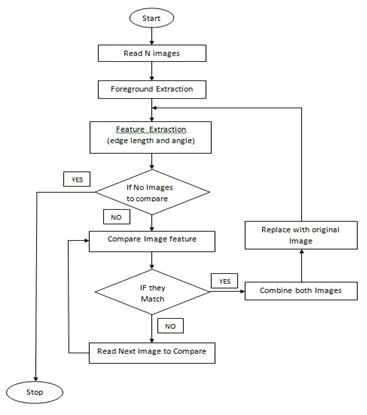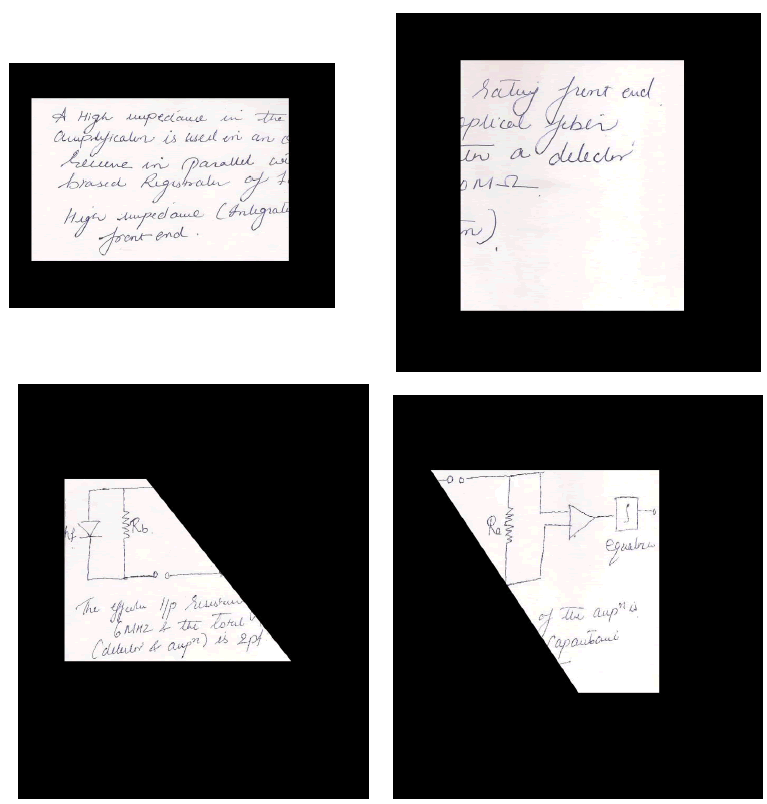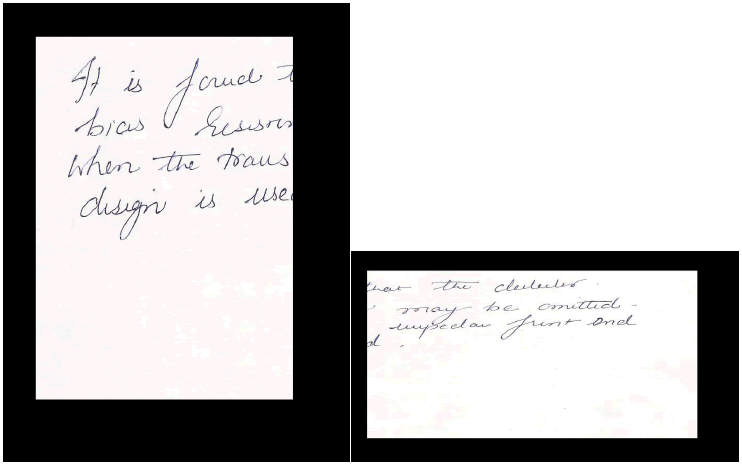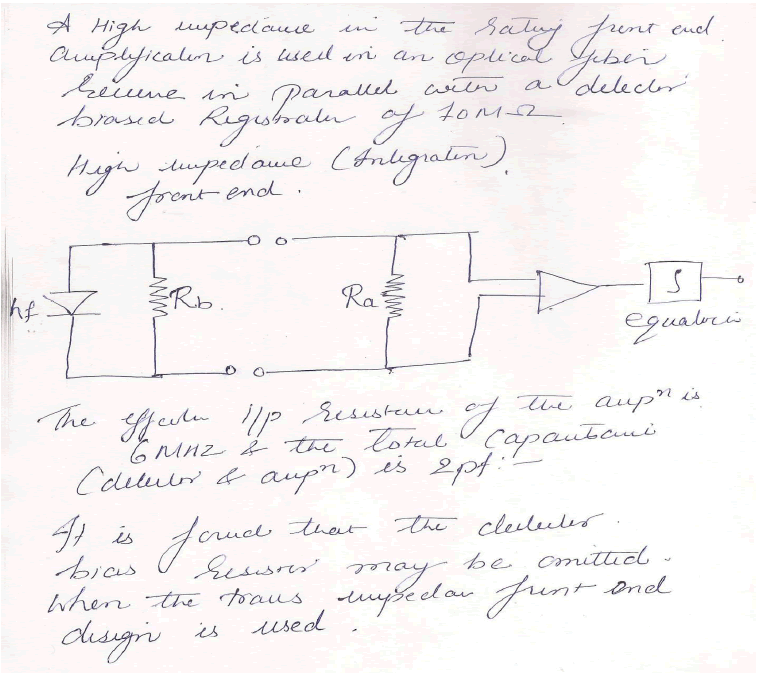ISSN ONLINE(2278-8875) PRINT (2320-3765)
ISSN ONLINE(2278-8875) PRINT (2320-3765)
Ms.Poonam D.Kesarkar1, Ms.Mridula RC. Prasad2, Prof.S.L.Tade3
|
| Related article at Pubmed, Scholar Google |
Visit for more related articles at International Journal of Advanced Research in Electrical, Electronics and Instrumentation Engineering
A challenging issue is to join the torn pieces of papers to reconstruct the original document. However this problem can be solved by using semi-automatic techniques. This can be a great advantage in forensic and investigation sciences. Torn pieces are joined by comparing edge length and and angles. Work is divided into three main stages foreground extraction, similarity feature extraction and merging process.
Keywords |
| Foreground Extraction, Similarity Feature Extraction, Merging Process, post processing. |
INTRODUCTION |
| During the last few years reconstruction of torn pages became more interesting issue. Keeping this in mind due to the time and effort needed for doing this task manually, more and more systems evolved for enabling an at least semi - automatic reconstruction of destroyed documents. On the one hand this development is caused by the increasing interest of reconstruction of important document in schools ,colleges and also in investigative bureaus for solving criminal cases. |
| Reconstruction of a document page from its torn pieces is very time consuming and difficult job to do manually, especially when the number of torn pieces are more. So it is important to finding the computer based solution to solve this problem. So while considering the solution, many of methods are posed to find out automatically reassembling the fragments along with the reduction in computation so that to speed up the operation .While considering document page it may be chopped by mechanical shredder or hand torn with no fixed bound. When paper is shredded by mechanical paper shredder the shredded pieces may be of fixed shapes (rectangular or square) . In shredded document there may be possibility that shape and size of chopped pieces may be same, so with the help of geometric feature only it will be not possible to reconstruct the document. In addition to geometric features, visual information is also needed for matching the fragments.. Here this problem can be solve with the help of image processing and computer vision technique, by considering the fragment pieces as a part of an image. And the work has to be done here to completely reconstruct the image of a paper with help of images of small pieces as an input, by using image features and allowing algorithm to completely finding the solution. |
FOREGROUND EXTRACTION |
| Acquisition is done here with the help of scanner and image in PNG format. And with the help of imresize command the image is resized so that computation cost of the image will be less. The acquired image is shown below. For further processing the given image converted to gray scale image .During preprocessing stage some undesired parts also displays in image. Since white parts are the pieces of torn paper and these small components may be classified as torn pieces .Hence next step is to remove these small components from the image. For that white parts in the image are removed having area less than some specified region filtering threshold . This is one of the steps in connected component analysis with the help of which small objects are removed. In next step actual foreground parts (scanned torn pieces) are selected from given image. Here for the sake of simplicity foreground parts are defined as white pixels and background parts as black pixel. And for removing these foregrounds parts are selected any white pixel having value 1 and find its all 8-connected components. These are required foreground parts i.e. area of interest. And other pixels in the image are background part. These selected image of different fragments are stored. |
SIMILARITY FEATURE EXTRACTION |
| This stage includes edge detection, boundary extraction and corner detection for further processing of characteristics Point Based Image merging Algorithm. This is very important stage in this algorithm which extracts the feature. And these features are used in merging stage to join the fragments. Edge detection is accomplished by using Roberts edge detector on each piece separately, which give edge map of individual torn pieces From this edge map boundary of the individual pieces are extracted and stored in the variables accordingly for further use. Boundary may be oriented clockwise or counter clockwise. In implementations the boundary is traced clockwise. Boundary extraction is nothing but saving co-ordinates of boundary pixels. This extracted boundary is use for corner detection. In this boundary extraction algorithm tracing starts from any white pixels in the image and find its successive 8-connected next pixel and store its co-ordinates accordingly. |
| Length is calculated using the formula = [( x2-x1) 2+(y2-y1)2] ½ |
| Angle is calculated using formula =acos[{(a) 2+(b) 2-(c) 2}/(2ab)] |
MERGING PROCEDURE |
| The next step in proposed technique is to merge the matching pieces of torn page. Here successive angles of the torn pieces and segment between are compared. In this the two pieces satisfying these conditions are merged. For checking these conditions the first piece which is to be considered, its angles are traced in clockwise direction whereas the other piece which is to be considered, its angles are traced in clockwise direction. From this example the merging procedure gives the output that line number 3 of first piece matched with line number 1 of the second piece. |
POST PROCESSING |
| From merging procedure the two torn pieces that are matching are found out. Here the first piece matches with secound piece and now necessary rigid transformation that is translation and rotation is applied to the matching images. After applying this transformation a new image of two joined pieces is found out. This image replaces the data base of pieces which is to be considered in next iteration. Similarly, merging procedure and postprocessing is successively applied to remaining torn pieces iteratively. This procedure is continued till all pieces have been merged. |
PROPOSED ALGORITHM |
| The basic steps involved in the proposed reconstruction system includes |
| 1. Read N number of images. |
| 2. Go for Foreground extraction. |
| 3. Go for Feature extraction….i.e……(edge length & angle.) |
| 4. Compare image feature |
| 5. If they match, combine both the Images & replace with the original image . |
| 6. If they don’t match, read next image . |
FLOW CHART |
 |
EXPERIMENTAL RESULTS |
| A.Torn pieces of page |
 |
 |
| B. Reconstructed image |
 |
CONCLUSION |
| Here by using this approach, it finds that the torn pieces of the document can be joined successfully with the help of segment length between matching corners. In output of proposed algorithm the reconstructed image formed from joined torn fragment images is found out. In this, the computational complexity of the method discuss in this is found to be very less. Also time required for individual stages are less as discussed. |
ACKNOWLEDGEMENT |
| All the accomplishments in the world require the efforts of many people and this project is no different. Regardless of the source, we wish to express our gratitude to those who have contributed to the success of this project. We would like to acknowledge the help and support of several people who have supported this effort. Our special thanks to our HOD Prof. S.U.Bhandari & our principal Dr.A.M.Fulambarkar for giving such an opportunity. We are gratefull to all the people, who helped us in making the idea of the project, a reality.We express our gratitude towards Prof.S.U.Bhandari ,our internal guide Prof.S.L.Tade & our project coordinator Prof.A.B.Patil for their guidance & support.They showed a lot of interest in our project, as well as suggested solutions on each of the problems faced by us and were always ready to clear our doubts.We are also glad to express our gratitude and thanks to our parents and friends for their constant inspiration and encouragement. |
References |
|